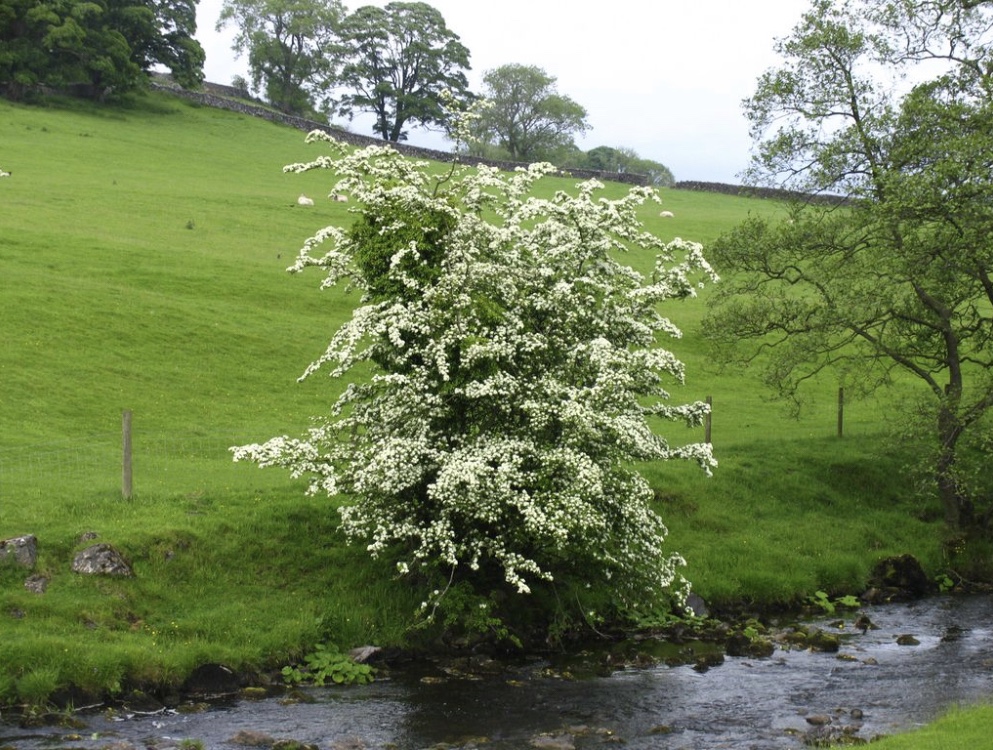
(all photos by author)
The Hawthorn, Crataegus monogyna, also known as Quickthorn, Whitethorn, or the May tree, is one of the most common small trees, (or large shrubs, depending on how you look at it), to be found in the British isles. Their scientific name comes from the Greek word for ‘strength’; Crataegus, and monogyna comes from mono, meaning ‘one’ and gyna meaning ‘seed’.
Thorny and stock-proof
They are sometimes grown as individual trees but it is much more common to see them grown in a closely planted row as a hedge. It is the ideal species for this as young Hawthorn plants grow quickly and densely with many thorny branches branching off from the trunk. This makes for a virtually stock-proof Hedge and the Hawthorn has been grown for this purpose for many thousands of years.
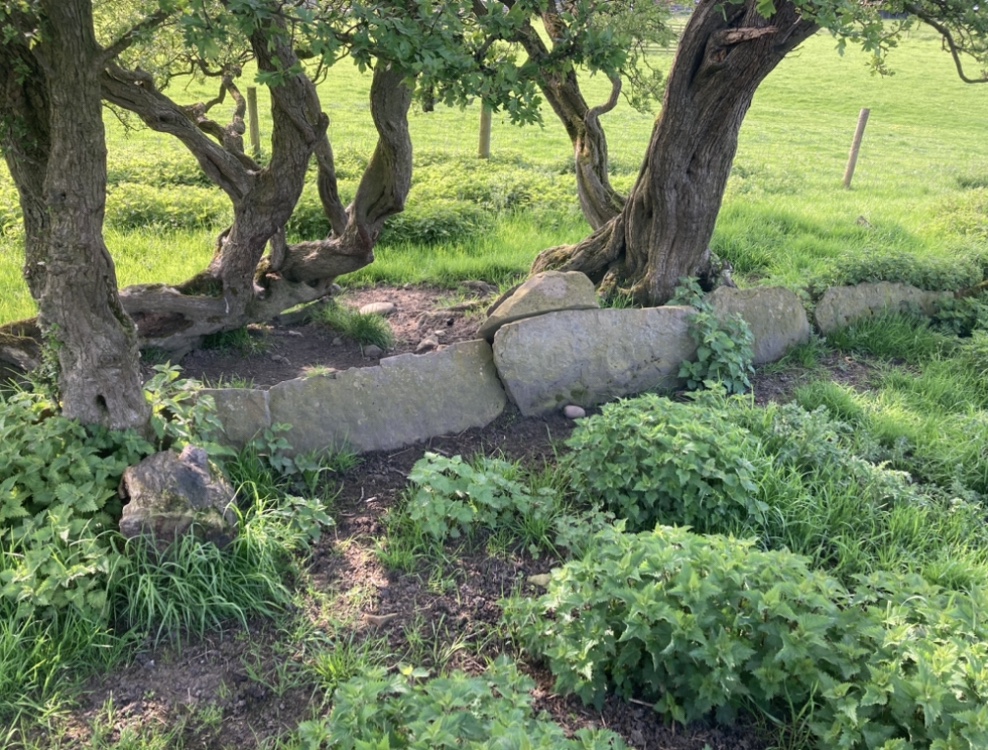
They can spread very quickly on ungrazed land, recently many saplings have had to be pulled out of SSSI land near Downham in the Ribble valley where they were rapidly spreading due to lack of grazing, as when left to their own devices they will turn into quite a bushy tree, growing on average to a height and breadth of around 20 feet.
It flowers at the same time as another thorny, native shrub grown for the purpose of stock-proofing; the Blackthorn, but unlike Blackthorn, whose stems are dark, the stems of Hawthorn are a light grey which turns to a pinkish brown colour with age, this is also when characteristic filled cracks start to appear along the trunk too, which the Blackthorn doesn’t have.
From the stems sprout red-coloured twigs which also go through the same colour changes as they grow, from these emerge glossy green leaves, which are between 2 to 3 cm long, divided into 3, 5 or 7 deeply cut lobes.
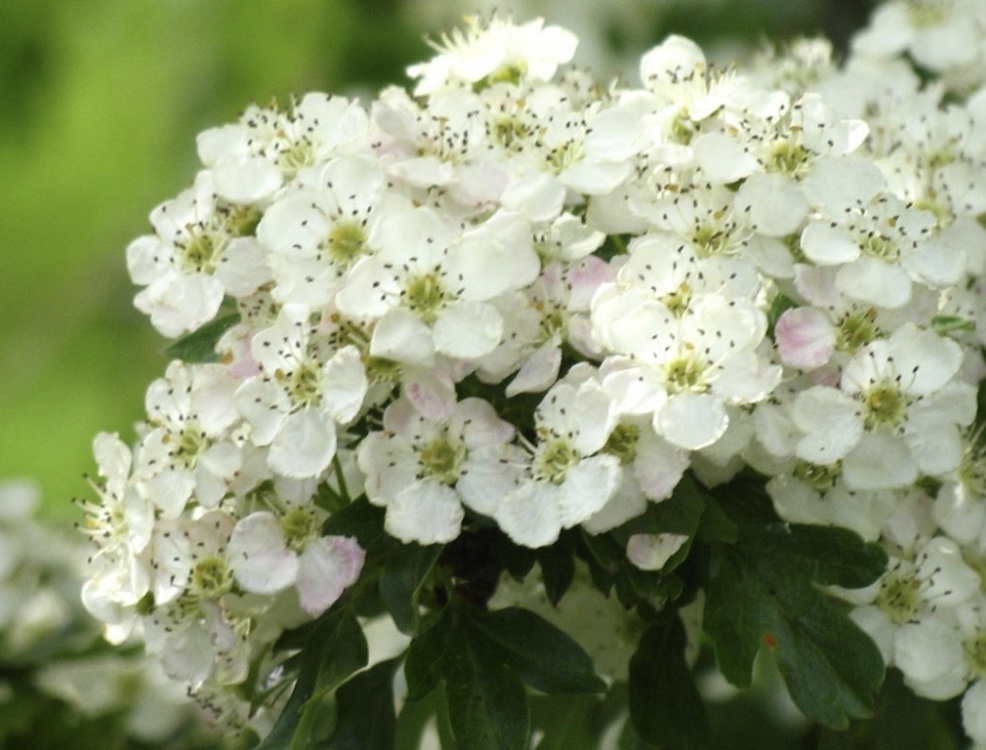
Fragrant Flowers of May
The tree comes into leaf at the end of March and quickly turns an emerald-green, by May it is in flower and it’s 5-petalled white flowers, which to a lot of people have a heady, sweet aroma, but unfortunately have an unpleasant smell to others, fill the hedgerows and lanes with colour, scent and life, as thousands of pollinating insects arrive to make use of this early summer bouquet.

Up very close the flowers of the Hawthorn have a faint scent of rotting meat which, thankfully, is hidden by the stronger and more pleasant fragrances of the flowers, this encourages pollination of the flowers by species of flies, such as hoverflies and Hawthorn flies, rather than bees, as these may not be fully active when it blooms.
However, by the time the Hawthorn is in full bloom many species of bumblebees, honeybees and other flying insects will have become active and the sound of their buzzing in a hedge full of blooming Hawthorn can be surprisingly loud!
These flowers will begin falling very soon after the tree has bloomed, almost like confetti , and after a breezy day or heavy spring shower they can carpet the lanes and paths with white, like a late fall of snow.
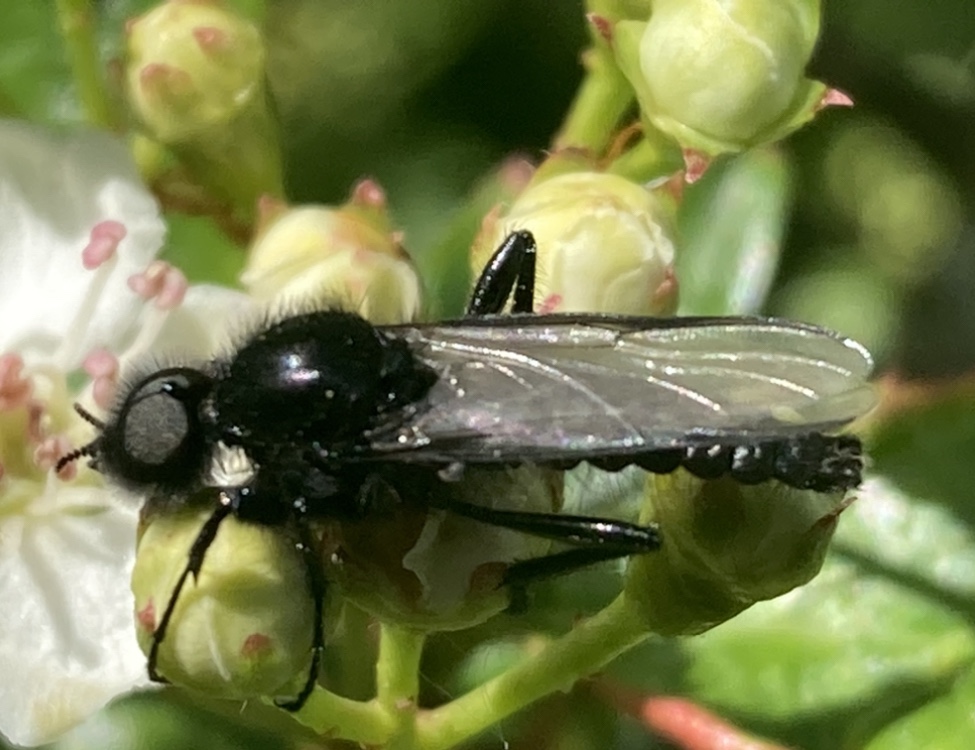
Red Haws of autumn
By September clusters of red berries will appear on the Hawthorn, these berries are known as ‘Haws’ and are what give the tree its name. Birds such as Fieldfare, Ring Ouzel, Mistle Thrush, Redwing and other songbirds, including of course the rare Hawfinch, will try their best to strip the hedgerows of these carbohydrate-rich berries to stock up for winter, also by depositing the seeds far and wide they carry out a useful seed dispersal method for the plant!
The Fairy Triad
In folk-lore the flowering of the Hawthorn marks the beginning of summer and its blossoms are also at the heart of May-day traditions like the May Day parade still held in villages like Slaidburn each summer and are still used to make and decorate the original maypoles.
It is also one of the legendary trees that make up the ‘fairy triad’ of the British isles; ‘Oak, Ash and Thorn’. Where all three trees grow together, fairy’s may frequent!
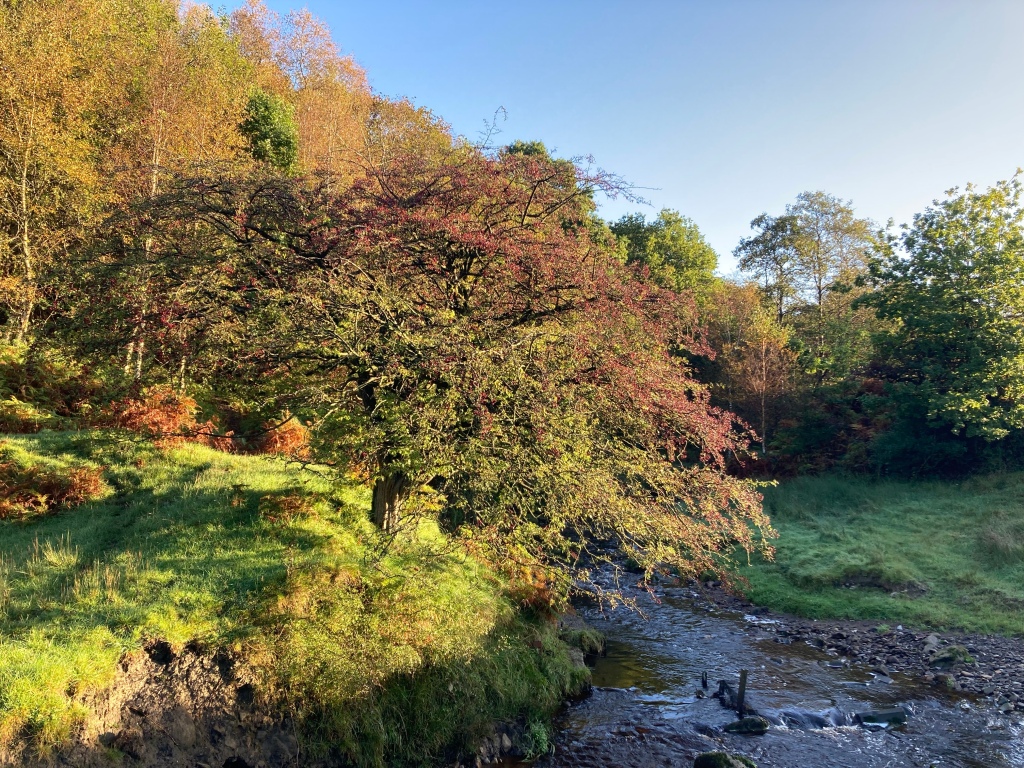
Versatile
For many centuries haws have been used to make a wide assortment of jams, jellies, wines and spirits, and many parts of the Hawthorn have medicinal properties which herbalists regard as being effective in treating cardiacal, or heart problems. Teas and infusions made of the dried fruit are thought to have a beneficial effect on the heart when taken over long periods.
Underneath the grey bark of the Hawthorn the timber is tough and a very pale yellow/pink, it has a very fine, straight grain too and is used for woodturning and engraving, with walking sticks, tool handles, cabinets, jewellery boxes and humidors all being made from its beautifully coloured wood.
A Hawthorn will grow on almost any kind of soil and is very tolerant of strong winds and salty air so can be found almost everywhere in the exposed, maritime British isles, as it grows so quickly it will often shield the saplings of slower growing native trees so will encourage the regeneration of woods.

Gamekeepers have understood this for generations and will plant it as a boundary for new game coverts. It is also a very important species for wildlife and game, many times a beater has had a Pheasant run into a Hawthorn hedge and stay put safe in its impenetrable depths and for this reason birds prefer it as an ideal place to build their nests.
In winter after the berries have all been eaten and before the May-flowers bloom, the Hawthorn still plays a very important role in providing shelter and home for insects which birds can eat when times are lean, so it is a year-long home for many animals, and some would believe fairies too!
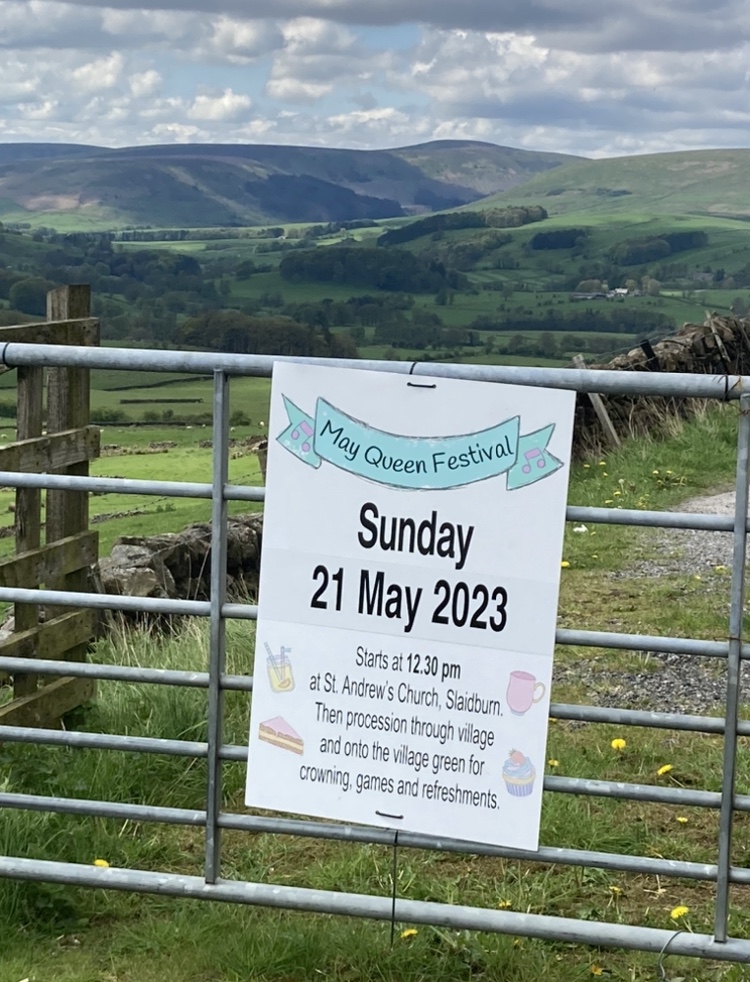
Among the many buds proclaiming May
The English poet William Browne (1590 to 1682), author of Brittannia’s pastorals once wrote of the Hawthorn;
‘Among the many buds proclaiming May,
(Decking the fields in holy day’s array
Striving who shall surpass in bravery)
Mark the fair blooming of the hawthorn tree
Who finely clothed in a robe of white,
Feeds full the wanton eye with May’s delight;
Yet for the bravery that she is in
Doth neither handle card nor wheel to spin,
Nor changeth robes but twice: is never seen
In other colours than in white or green.
Learn then content, young shepherd, from this tree,
Whose greatest wealth is Nature’s livery;
And richest ingots never toil to find
Nor care for poverty, but of the mind’
A B-H